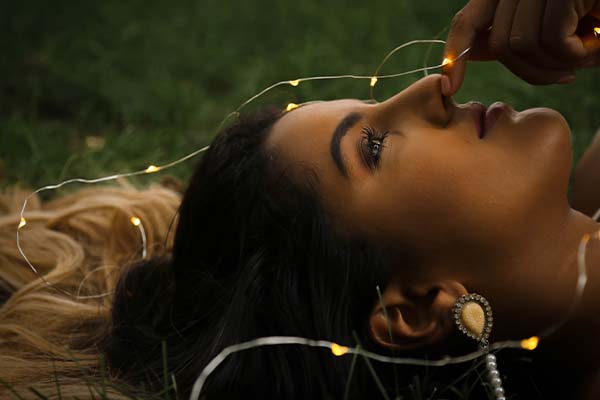Whether you’re looking to illuminate your kitchen cabinets or backlight your TV, with LED strip lights, there’s an answer to everything. There’s simply one reason for concern. Will they proceed to work if they are trimmed down? Of course, they can!
What Are LED Strip Lights
LED strip lights are decorative lamp belts made up of individual light emitting diodes that are hooked up on a narrow, flexible circuit board. It is half an inch or 10 to 12mm huge and operates on low-voltage DC power. They are also recognized as LED ribbon lights or LED tape lights.
In the back of the LED strip is a double-sided adhesive. You can mount your LED strip on any surface by genuinely peeling off the adhesive. The flexibility of LED strips lets it to be established also on uneven and curved surfaces.
What Are The Benefits Of Using LED Strip Lights
You can install your LED strip lights in tight places because of their small width. You can indeed hide your strips from view. It’s easy to install. You simply peel the glue in the reverse and stick it to any surface.
You can dim your LED strip lights with their handed regulator or connect them to any compatible home automation system. You can buy LED strip lights that are dust and water- resistant. LED strip lights are extensively customization in terms of color, width, length, voltage, brightness, and CRI.
How Do You Cut LED Strip Lights
Whatever type of LED strip light you have, you can be sure of one thing, and that’s that you can cut it into your desired length. Throughout your LED strip, you’ll find straight or spotted black or white lines which indicate the places where you can cut. It’s possible to cut on these lines because circuits are fully closed here. So, it’s safe to cut your strips here without damaging them.
Since there are exceptional types of LED strips, the slicing traces on each will additionally be different. However, most LED strips have cutting traces after every 3 LEDs. You will also find copper dots on both aspects of the black slicing line. The pattern they form is symmetrical. There are two copper dots on single shade lights however on color-changing RGBs, you will locate 4 copper dots. If you come across these copper dots, then you will see the reducing line in between.
Before cutting, you need to test your lights first to see if they’re working. The reason for this is that cutting your LED will surely make your warranty void. Also, determine the length of the LED strip that you need for your project. Be accurate in measuring the part of your home where you want to put your LED strip lights.
Also, cut the strip on the line that’s closest to your needed length for a perfect installation. Use a pair of scissors or a sharp knife to cut your LED strip on the line. Do it sluggishly so you don’t cut off commodity additional accidentally. You won’t get hurt if this happens but your LED strip can be damaged.
How Do You Connect Your Cut LED Strip To a Power Source
Still, you’ll get rid of its pre-fitted socket so you’ll need a commodity new If you cut your LED strip. There are two methods of doing this. One is by using a strip connector and the other is by soldering a new socket onto the strip. The easiest way of doing this is by using strip connectors. You don’t need tools for this system. With a knife, start by cutting away the translucent plating or silicone covers on the copper pads.
Using rubbing alcohol and a small encounter, clean the strip completely. Make sure that there’s no silicone left on top of the copper connectors. else, your lights won’t work duly. The strip should also be fitted into the connector. Make sure to match the factors – red lines with red, green lines with green, and so on.
The other system uses a soldering iron. You can directly solder a socket to the LED strip by first melting the solder on the copper pads and also attaching the wires to the solder puddles. It’s important that the wire’s opposition match the positive and negative marks on the strip.
Match the black wire with the negative mark and match the red wire with the positive mark. When the wires are connected to your strip, you can also plug them into a LED power source to check if they’re working.

How Do You Reconnect Two LED Strips
Strip connectors are generally the easiest solution as they don’t require any tools. Start by using a knife to cut away the translucent plastic covering the copper pads.
Also, just fit the strip into the connector, ensuring that the factors match up.
The second system is to solder directly to the strip using a soldering iron and use of old wires. Melt the solder directly onto the copper dots to form a small puddle and line up the opposition.
The black line should line up with the negative mark, and the red line should line up with the positive mark.
Use wire strippers to strip around half an inch of casing off the cease of your wires. Twist the cease of the wire to be part of all the frayed ends and connect the wires to the solder puddles.
Once a connection has been established, you can plug your strip lights into a strength supply and check that they’re working. Voila! It’s that simple.
What If LED Strip Not Working After Cutting
Customizing the size of your LED strips may additionally sound uncomplicated, however, mistakes can happen.
If your LEDs aren’t working after being cut, check whether or not your lights had been designed to be cut.
If they weren’t, but you still cut them anyway, then, unfortunately, the harm has been done. In these lights, the circuit runs always throughout the entire length, so slicing it will have caused everlasting damage.
If your strip was once designed to be cut, the 2nd measure is to check you’ve cut it in the right place.
Cutting outside of the cutting line will kill that man or woman circuit, so you’ll have to trim and return to the closest cutting line.
There are some other issues as well that you can notice, but they aren’t directly related to the cut, but rather when you connect strips together.
Still, you’re experiencing a voltage drop, If your LED strip setup is working but is a different shade of brightness at each end.
Generally, 12V LED strips shouldn’t exceed 10 feet, and 24V shouldn’t exceed 15 feet. Voltage drops can be averted by reducing the length of the strip per power supply.
Alternately, if your RGB LED strips aren’t changing color, this suggests that you’ve lined the polarities up inaptly when connecting them. To ameliorate this, just flip your strip around and reconnect it.
